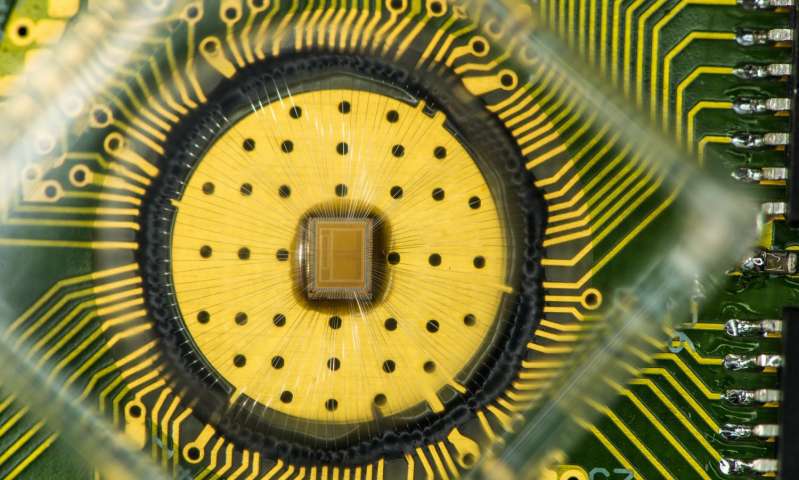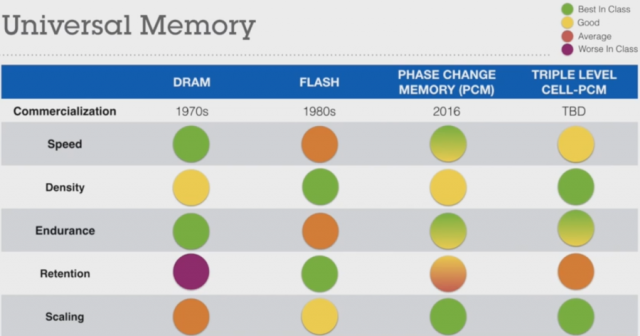
Scientists at IBM Research have exhibited reliably storing 3 bits of data per cell for the first time with the help of a fairly new memory technology, phase-change memory (PCM). PCM has the potential to be a revolutionary change to the memory landscape, which currently spans from DRAM to hard disk drives to flash. PCM has a combination of read/write speed, endurance, non-volatility, and density that gives it a slight edge over these older forms of memory.
Unlike DRAM, PCM will not lose data when powered off, as DRAM does, and can endure at least 10 million write cycles, which is the process of recording data on a NAND flash solid state storage device. This potential update delivers quick storage to accommodate the ever-increasing growth of data from mobile devices and the Internet of Things. IBM scientists imagine standalone PCM as well as hybrid applications, which combine PCM with flash storage. A speed boost will occur when the technology works with machine learning algorithms using large datasets, ultimately reducing the latency overhead when reading data between iterations.
After successfully displaying the ability to store 1 bit per cell in PCM, scientists at IBM succeeded in maneuvering electrical currents to store 3 bits per cell in a 64k-cell array at elevated temperatures. To store a ‘0’ or ‘1’ (bits), scientists must apply a high or medium electrical current to the material. PCM materials demonstrate two stable states of low and high electrical conductivity – the amorphous (without a clearly, defined structure) and crystalline (with structure) phases. Both a ‘0’ and a ‘1’ can be programmed to be written in either phase, and then followed by the application of a low voltage.
Combining the properties of several of its predecessors, the triumph of PCM is extremely exciting for the future of the technological field. “Phase change memory is the first instantiation of a universal memory with properties of both DRAM and flash, thus answering one of the grand challenges of our industry,” said Dr. Haris Pozidis, an author of the research paper and manager of non-volatile memory research at IBM Research – Zurich. The amount of bits per cell is also monumental “because at this density the cost of PCM will be significantly less than DRAM and closer to flash.”

To achieve multi-bit storage, the IBM team has developed two enabling technologies: a set of drift-immune cell-state metrics and drift-tolerant coding and detection schemes. The cell-state metrics measure a physical property of the PCM cell that remains stable over time, staying immune to drift, which ultimately affects the stability of the cell’s electrical conductivity. A novel coding and detection scheme used to provide robustness of stored data in a cell eventually allows for researchers to read the cell state reliably over long time periods, securing non-volatility.
“Combined these advancements address the key challenges of multi-bit PCM, including drift, variability, temperature sensitivity, and endurance cycling,” said Dr. Evangelos Eleftheriou, IBM Fellow.
Despite optimistic performances, phase-change memory is still not ready to replace other memory software. Scientists will now have to address the characterizations of PCM’s performance and power impact.
Source: PhysOrg and ExtremeTech
Advertisement
Learn more about Electronic Products Magazine





